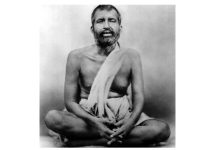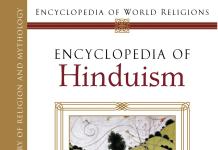In the journey towards the regeneration and divinization of humanity, the first crucial step is to shed our beastly nature, characterized by cruelty. Recognizing this, enlightened sages have long advocated the practice of Ahimsa, or non-injury. Ahimsa (also spelled Ahinsa), derived from the Sanskrit word, holds deep significance as the ancient Indian principle of nonviolence that encompasses all living beings. Rooted in the core beliefs of Hinduism, Jainism, Buddhism and Sikhism, Ahimsa emerges as a transformative force that nurtures love, compassion, and universal harmony. Within the confines of this article, we embark on a profound exploration of Ahimsa, delving into its essence, exploring its significance, and uncovering its practical applications.
Understanding Ahimsa: The Principle of Nonviolence
Ahimsa, or non-injury, goes beyond mere abstention from physical violence. It encompasses a comprehensive abstinence from causing any pain or harm to any living creature, whether through thoughts, words, or deeds. It requires cultivating a harmless mind, mouth, and hand. Ahimsa is not just a negative concept; it is rooted in positive cosmic love, fostering a mental attitude where hatred is replaced by love. Ahimsa is the embodiment of true sacrifice, forgiveness, and inner strength.
Love and Ahimsa: Inseparable Companions
Ahimsa and love are inseparable companions on the path of spiritual growth. Ahimsa is another name for truth and love, reflecting the deep connection between these virtues. Where there is love, Ahimsa flourishes, and where there is Ahimsa, love and selfless service thrive. They form a harmonious trinity that uplifts individuals and society as a whole.
Ahimsa in the Teachings of Saints and Prophets
Throughout history, saints and prophets from various cultures and religions have emphasized the message of love, Ahimsa, and selfless service. Their teachings highlight the transformative power of Ahimsa in attaining salvation and experiencing peace and bliss. Ahimsa is not only a means to personal spiritual growth but also a pathway to create a harmonious and compassionate world.
The Subtle Forms of Himsa: Unveiling the Depths of Nonviolence
Ahimsa extends beyond physical violence to encompass subtle forms of harm. It includes refraining from contempt, prejudice, ill-will, harsh speech, and thought patterns of hatred. Any action or behavior that inflicts emotional or psychological pain on others violates the principle of Ahimsa. Practicing Ahimsa in its purest form requires avoiding all forms of harshness, both direct and indirect, and fostering an environment of kindness, compassion, and understanding.
Ahimsa in Yoga: A Crucial Element for Spiritual Progress
Ahimsa holds a significant position in the philosophy and practice of yoga. It is included as the first of the Yamas, the self-restraints, in Patañjali’s Raja yoga system. Ahimsa serves as a foundation for progress in yoga, as it purifies the self and cultivates a state of nonviolence in thought, word, and deed. By practicing Ahimsa, individuals pave the way for success in yoga asanas and establish a harmonious connection with themselves and the world around them.
Benefits of the Practice of Ahimsa
The practice of Ahimsa encompasses all virtues and revolves around the principle of nonviolence. It becomes the pivot around which other ethical and religious principles revolve. By embracing Ahimsa, individuals develop willpower, fearlessness, and the ability to influence and positively impact the world. Ahimsa is a transformative force that dissolves hate and animosity in the presence of love. It empowers individuals to move the world, tame wild animals, win the hearts of others, and subdue their enemies. The power of Ahimsa is profound and surpasses that of intellect, electricity, or magnetism.
The practice of Ahimsa cultivates a strong heart and develops willpower. In the presence of a true practitioner of Ahimsa, hostilities are abandoned, and even natural enemies coexist peacefully. Lions and tigers lose their aggressive nature and pose no harm to such a yogi. Ahimsa bestows the yogi with the ability to command the elements and nature itself. It is a realization of unity and the non-dual consciousness, leading to the highest states of peace, bliss, and immortality.
Ahimsa, the principle of nonviolence, is a fundamental virtue in Indian religions and a timeless message echoed by saints and prophets. It goes beyond abstaining from physical harm, encompassing all aspects of life and promoting love, compassion, and harmony. Embracing Ahimsa brings forth personal growth, peace, and spiritual evolution. By practicing Ahimsa, we contribute to the creation of a more compassionate and peaceful world, where all living beings can thrive together. Let us embrace Ahimsa as a guiding principle in our lives, nurturing love, and fostering unity among all.















































